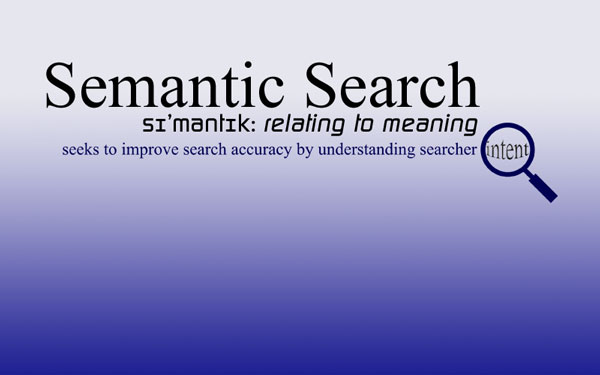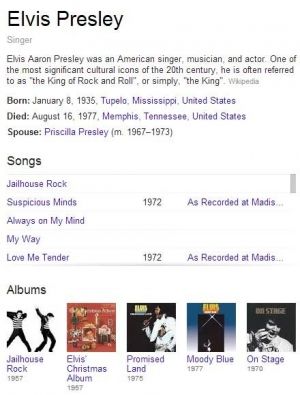
Why great website content is critical for semantic search
 Google’s focus has always been to be the best search engine, known for providing the fastest and most relevant set of results to the searches we enter.
Google’s focus has always been to be the best search engine, known for providing the fastest and most relevant set of results to the searches we enter.
Being the best is what has taken them from their small beginning of two computer geeks working together on a Uni project , to where Google is today: used by around 70% of the world’s population and, in locations like the UK, usage is nearly 90%.
Google has become the verb of search.
But Google’s ability to remain the premier search engine is founded on its ability to be able to increasingly index and understand information on the World Wide Web. To do that, Google search is changing to what is called “semantic search”. (For more information and understanding on semantic search, please read the first article in this series).
Semantic search seeks to improve search accuracy by understanding searcher intent and the contextual meaning of web content. For Google to improve search, the semantic index behind their Knowledge Graph needs to continue to consume information, understand it, and analyse its validity and authority.
Google’s search satnav system is locked on to a destination, moving Google search from being just a search engine to a knowledge engine, and your website has the opportunity to play a part in that transition. The content (text, images, video, audio etc) you present on your website has the potential to be a valuable resource for Google to display in their semantic search results, but first we need to consider why it may not.
A Lesson from the Garden
A wise rose gardener will tell you the importance of pruning. Wikipedia helpfully describes the process: “The practice entails targeted removal of diseased, damaged, dead, non-productive, structurally unsound, or otherwise unwanted tissue from crop and landscape plants” . The process of pruning is very important to increase yield and quality.
During the last three years, Google has been engaged in an extensive pruning programme. Through updates to its algorithms given cute names such as “Penguin” and “Panda”, but with not so cute outcomes for those affected, Google has targeted removing diseased, damaged, dead and non-productive links and pages from its index and search results. Google has been preparing the way for a better search experience that finds better content and ultimately better answers. In other words, search that provides increased yield and quality.
For Google to give the best search results relevant for those searching, it needs to find the best and most authoritative content. If we are honest, we wouldn’t expect anything less. When we search via Google, we want to find the best answers to the questions we are asking.
How can I help you?
So for your web pages to display in semantic search results for the questions your target customers are asking, your site needs high quality content focused on the meeting the range of needs presented by your customers.
When anyone searches the Internet they do so because they have a problem for which they need a solution, or a question that needs an answer. By writing and producing semantically rich web content (don’t just think text, think quality images, video, audio etc as well), your website will provide a rich source that can be harvested by Google’s web spiders and presented through search.
Consider, for a moment, the experience of walking into a shop in the days before supermarket-style self-shopping came about. As you opened the door and the bell above gave that inviting ring, the shopkeeper would come to the counter to greet you and say something like, “Good morning. How can I help you?”. That type of engagement not only made you feel welcome in the shop, but also gave you an assurance that the shopkeeper was ready to listen to you – the customer.
For semantic search, it won’t be enough anymore to just put up supermarket-style self-shopping pages that contain a few lines of text loaded with the right keywords. Content needs to engage with its audience, it needs to be able to greet the visitor and give that assurance that you have an answers for the questions they are asking.
In-depth content will also have an important part to play going forward, but don’t get stuck on that as a silver bullet to SEO success either. Quantity is not necessarily a guarantee of quality. As David Amerland says in Google Semantic Search (pg 181), “The guiding principle is, always, value to the end user as determined by relevance to a search query”. What counts going forward will be useful and valued content that answers the questions the customers in your target market are asking.
Optimising web pages for semantic search
 Consider too, the relationship between content and what may also be relevant to that content. Just as we can see in Google’s Knowledge Graph search result for the question, “How old was the King of Rock and Roll when he died?“, there are relational links to other information: e.g. his wife, songs and movies.
Consider too, the relationship between content and what may also be relevant to that content. Just as we can see in Google’s Knowledge Graph search result for the question, “How old was the King of Rock and Roll when he died?“, there are relational links to other information: e.g. his wife, songs and movies.
Google’s semantic search is capable of a much broader and deeper search experience than what we have become used to with the ten blue links of regular search. Google is now able to understand the intent of our search queries and provide personalised search results. This means that the answer to a given query will be different depending on a wide range of factors including your location or time of day and the connections you have in social media.
As we have seen above, the goal of semantic search is to provide relevance to a search query. When considering our own website content and optimising it for semantic search, we need to think relevancy, i.e. how we can build relational connections between our web pages to provide greater informational depth and value to each one through interlinking. By doing that, we can then increase the content value of each through, greater informational depth.
For each of the pages on your website and in respect of the search queries each page answers, ask yourself, what other pages may be relevant to that page? By doing that, you can increase the value of each page by extending its reach to answer further visitor queries, rather like a miniature “Knowledge Graph” experience
Creating a web page “Knowledge Graph”
For example, consider a website for a Garden Centre business. They will not only sell plants and shrubs for your garden, but, to name just a few, also garden tools, pesticides and fertilisers, garden furniture, and books on gardening.
Now think about a page that showcases some of the roses they sell. The page could just describe each type of rose for sale and nothing more. But what if that page also included a few blocks of additional information written in summary form, which linked off to the related articles? For example, the page could link to an article on the best pesticides to use for roses. Another link could be to a blog post on 10 top tips for caring for your rose garden or the history of roses, and yet another could link to a page of books on rose gardening.
What is more, the related articles included on the page could be changed to reflect the season, for example providing different related content for the spring compared to the summer. This will then more closely mimic the way Google’s personalised search provides search results, in this case, based on the season of the year. By providing Google with seasonally relevant content you can improve the chances of your web pages being displayed for personalised search queries.
Worlds converging
It’s here that we can perhaps see the merging of the needs of a ‘visitor’ to your website, be that a real person or a Google search bot. By providing a better, more joined-up, user experience on your website for people, you are in essence providing a better semantically connected indexing experience for Google.
If your website content is better understood by humans because of the way you have structured and connected it, then it’s very likely to be easier for Google to understand. The better you can help Google by providing semantically relevant content (think Knowledge Graph), the better the chances are that your site will be well indexed and understood as a resource to return in Google’s search results. The better your visitors understand how you can help them, the more likely they are to share that content with others through social media or from their own website.
Producing content for semantic search requires much more work than the magic spells cast in the past. Gone are the days when optimising a web page meant sprinkling the page with a few prime keywords dipped in secret sauce.
Search engine marketing has, to a large extent, become harder, but it has also got better because it requires content that answers the questions your customers are asking. In essence, that’s what they have always been asking for. There are no shortcuts, no fixed formulas and before you think it does – the above suggestion shouldn’t be considered one either. But for those who are willing to give time to invest their expertise into the content they produce and do it right, the rewards will be worth it.
This is the second in a series of three articles on semantic search:
- Will you be ready for Semantic Search in 2014?
- Why great website content is critical for semantic search
- Why social media for business is broken and how you can fix it
